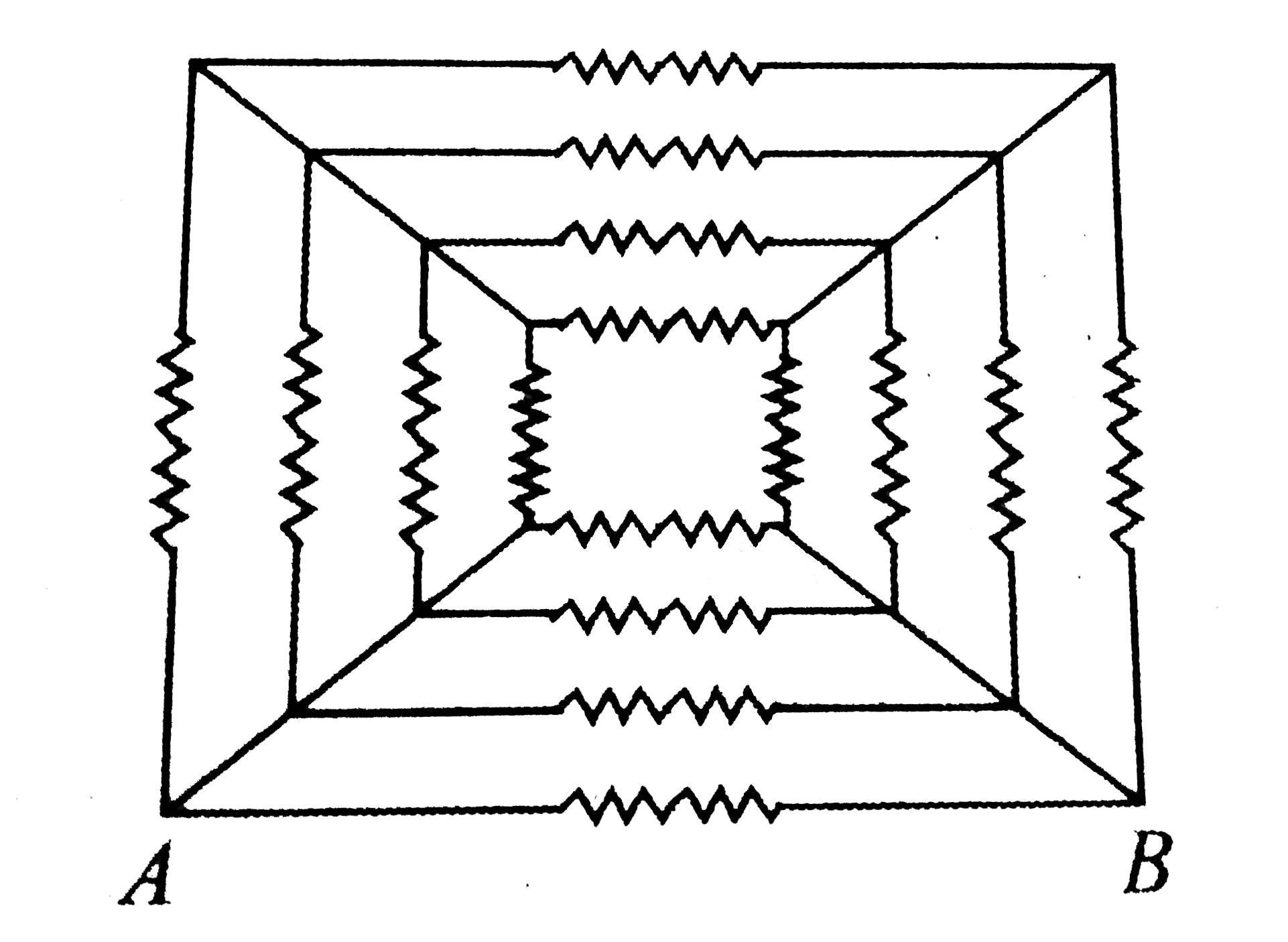suppose the ends of the coil in the previous problem are connected to a resistane of . Neglecting the resistance of the coil, find the heat produced in the circuit in one minute.
Since
Topper's Solved these Questions
- ELECTROMAGNETIC INDUCTIONBOOK - HC VERMACHAPTER - ELECTROMAGNETIC INDUCTIONEXERCISE - Exercises
89 Videos
- ELECTRIC FIELD AND POTENTIALBOOK - HC VERMACHAPTER - ELECTRIC FIELD AND POTENTIALEXERCISE - Exercises
75 Videos
- ELECTROMAGNETIC WAVESBOOK - HC VERMACHAPTER - ELECTROMAGNETIC WAVESEXERCISE - Exercises
9 Videos
Similar Questions
Knowledge Check
Sixteen resistor, each resistane 16Ω are connected in the circuit as shown in fig. the net resistance between A and B is
 A1ΩB2ΩC3ΩDΩ
A1ΩB2ΩC3ΩDΩ
What will be the motion of the conductor of the previous problem, if a resistor of resistance R is connected into the circuit instead of the capacitor? Neglect the resistance of the conductors.
View SolutionIn the previous problem calculate the ratio of voltage sensitivity if ratio of resistance of coil A to resistance of coil B is1:3.
View SolutionA coil of self inductance 2.5 H and resistance 20Ω is connected to a battery of emf 120 V having internal resistance of 5Ω. Find :
The current in the circuit in steady state.
View SolutionA heating coil has a resistance of 200Ω. At what rate will heat be produced in it when a current of 2.5A flows through it?
View SolutionA potential difference of 100 V is applied across a wire of resistance 50 Ω for one minute. Find the heat produced in joule.
View SolutionSuppose the resistance of the coil in the previous problem is 25Ω. Assume that the coil moves with uniform velocity during its removal and restoration. Find the thermal energy developed in the coil during (a) its removal, (b) its restoration and (c) its motion.
View SolutionSuppose the resistance of the coil in the previous problem is 25Ω. Assume that the coil moves with uniform velocity during its removal and restoration. Find the thermal energy developed in the coil during (a) its removal, (b) its restoration and (c) its motion.
View Solution
